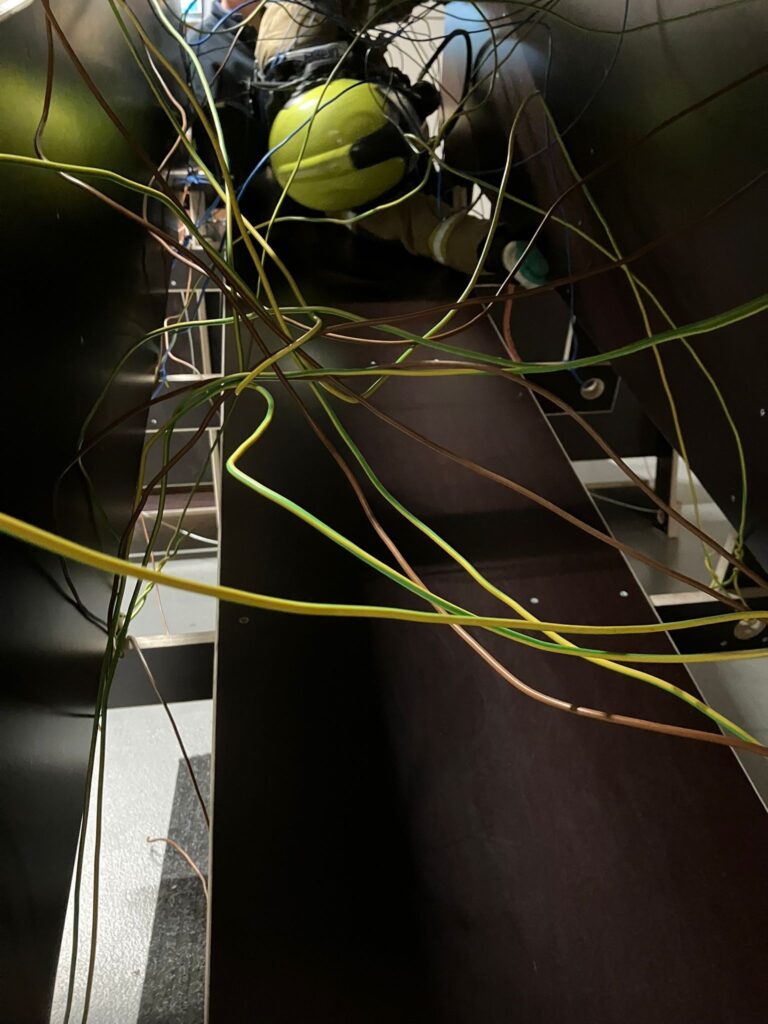In the 14 years that I’ve been a volunteer firefighter, our training has always evolved. The risks of firefighting are varied and change with time. Hybrid and full-electric cars — with more than just a single or double airbag in front — are just an aspect of the larger energy transition. Solar panels, hydrogen, the increase of heat pumps — this changing landscape is something we move along with in our training.
That said, an old-fashioned structure fire can still carry plenty of surprises of its own. You may be navigating a building, and parts of it may collapse as its structural integrity is weakened by the heat. And now you’re stuck.
Recently we’ve been using a new training aid. Wooden board tunnels, with inside either rope webbing, or strung strands of electric wire. The tunnel can be simply horizontal, or positioned at an angle, allowing for either climbing or descending. The exercise is to make it from one end to the other. With the earthquake tragedies in Syria and Turkey fresh in our minds, we set to test ourselves.
Depending on your approach, you might go head-first into the horizontal tunnel. Tugging at one part of the web, tightens it somewhere else. You make some room. Now part of the web snags behind your air bottle. Moving only gets you tighter stuck. You didn’t have a lot of room to move to begin with, and now even less. You’re starting to warm up in your suit and breathing gear.

While there are several ways to deal with this exercise, the most important rule to keep in mind is: take your time, conserve your air, and remain calm. Figure out why you are stuck, slowly untangle yourself, and try again.
In the horizontal tunnel, this is fairly easy. Move yourself back a bit, get yourself free by feeling where you are currently stuck, and try again. Maybe move into a slightly different position, try a new approach.
But moving down an angled tunnel, this is different. You’re also dealing with your own weight. You need to keep yourself in place, and conserve your breathing while you’re heading down head-first. Staying calm is key. Pushing yourself back up to try something else costs air and energy, making you sweat more.
Most advice here can in some way be applied elsewhere. Software development, for example. I can think of many a time where I was stuck on a problem — a bug, some code that just wouldn’t work as intended — and the solution turned out to be to take my time, take a breath, try again. Or try another approach. Don’t stress out – remain calm. Let that subconscious mull it over. Go for a walk, take a shower, grab a cup of coffee… get away from the problem for a bit. When you come back to the problem, you might suddenly see what has you unable to move forward.
Even when in a tighter spot — a deadline, a problem on production, let’s say — these principles remain. More often you’ll get more stuck rushing through. Or make the situation worse. You get the idea.
When handling an incident, running up a set of stairs while carrying equipment, it’s still wiser to catch your breath for 30 seconds before masking up, than to rush, be winded, and run through your air too fast.
I’m looking forward to some more training with these tunnels – let’s see how I do if some buddies flip the tunnel upside-down when I’m halfway through.
And finally – don’t be afraid to ask for help. As firefighters, we enter a building in pairs, and stick close to one another. If you’re stuck and you can’t find a way out – the help you need may come from the next person.

Leave a Reply
You must be logged in to post a comment.